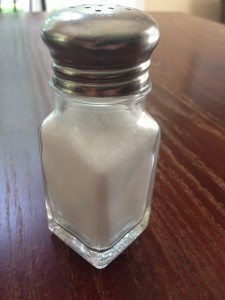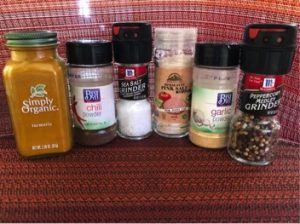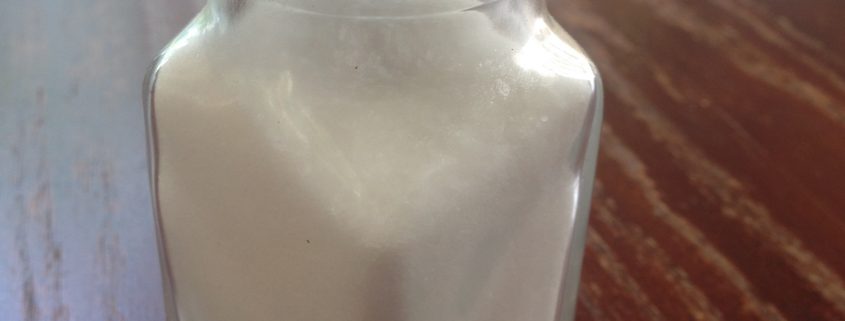Time to Celebrate Salt Awareness Week
 This week, March 12th-18th is National Salt Awareness Week! The purpose of this week is to help educate you, and others, on the proper sodium intake, the functions of sodium in your body and the side effects of excessive sodium intake. This initiative began in 2008 by the World Action on Salt and Health (WASH), whose mission is to encourage food companies to keep the salt levels low in the products they manufacture.
This week, March 12th-18th is National Salt Awareness Week! The purpose of this week is to help educate you, and others, on the proper sodium intake, the functions of sodium in your body and the side effects of excessive sodium intake. This initiative began in 2008 by the World Action on Salt and Health (WASH), whose mission is to encourage food companies to keep the salt levels low in the products they manufacture.
All About Sodium
According to the 2015 Dietary Guidelines for Americans, the recommended amount of sodium is 2,300mg per day, or 1 teaspoon. The average person consumes almost double that, daily!
Usually when you think of sodium, blood pressure follows. That’s because they go hand-in-hand. Too much sodium in your diet can raise your blood pressure, which is dangerous for your heart. On the other hand, sodium is necessary to work with potassium (another mineral) to keep your blood pressure normal. Too little sodium can lead to low blood pressure, which is also not good. Thus, you need just enough sodium, which is why it is recommended to keep your intake at 2,300mg per day.
Along with blood pressure, sodium also plays a role in other bodily functions.
- Aids in the proper functioning of muscles and nerves.
- Assists with nutrient absorption in your small intestine.
- Maintains the water balance in your body by drawing water in or out of cells in your body, depending on what your body needs.
4 Tips to Reduce Your Sodium Intake
Although sodium is a necessary mineral for overall health, it should still be eaten in moderation.
- Limit Processed Foods. About 75-80% of salt is added during the production of processed foods; it acts as a preservative. It decreases water activity and, therefore, helps to control bacterial growth.
While this is good news for food manufacturers, it is not beneficial to consumers. Instead of selecting prepackaged meals at the grocery store, choose fresh ingredients such as fruits and vegetables to prepare meals at home. You can even make your own snacks, including trail mixes, popcorn, or baked sweet potato chips!
 Flavor with Herbs and Spices. Salt is typically used as a way to flavor food, but it isn’t the only way you can add flavor! Herbs and spices are another way to add a ton of flavor to meals, without all the sodium.
Flavor with Herbs and Spices. Salt is typically used as a way to flavor food, but it isn’t the only way you can add flavor! Herbs and spices are another way to add a ton of flavor to meals, without all the sodium.
There are so many different herbs and spices you can try! There’s ginger, thyme, turmeric, cumin, rosemary, basil, parsley, dill, and more. You can use this opportunity as a way to get creative, while keeping the amount of salt used to a minimum!
- Read the Label. By reading the label, you can become more familiar with exactly how much sodium you’ll be getting in that item. Sodium is listed right on the label for your convenience. If it says 20% or more of the daily value (DV), it’s considered high in sodium. If it says 5% or less of the DV, it’s considered low in sodium.
You can also read the ingredient list. If salt is one of the first few ingredients, chances are it’s high in sodium.
- Cook More Meals at Home. A home cooked meal ensures that you have full control over all ingredients; you’ll know exactly how much sodium is going into it. If you go out to eat, you won’t know exactly how much sodium you’re eating. Restaurants tend to use more salt to make their food taste good.
If you’re up for being adventurous, try recreating your favorite restaurant dish at home, with less salt! You can use other herbs and spices to give it more flavors.
Sodium gets a bad rep, but it’s important to remember that it’s still an essential mineral. You just have to watch how much of it you’re consuming daily. Use this week as an opportunity to create new recipes that don’t include salt or decrease the amount of salt in them!
Your Turn to Take Action: In what creative ways can you lower your salt intake this week? Let me know in the comments below!


Leave a Reply
Want to join the discussion?Feel free to contribute!